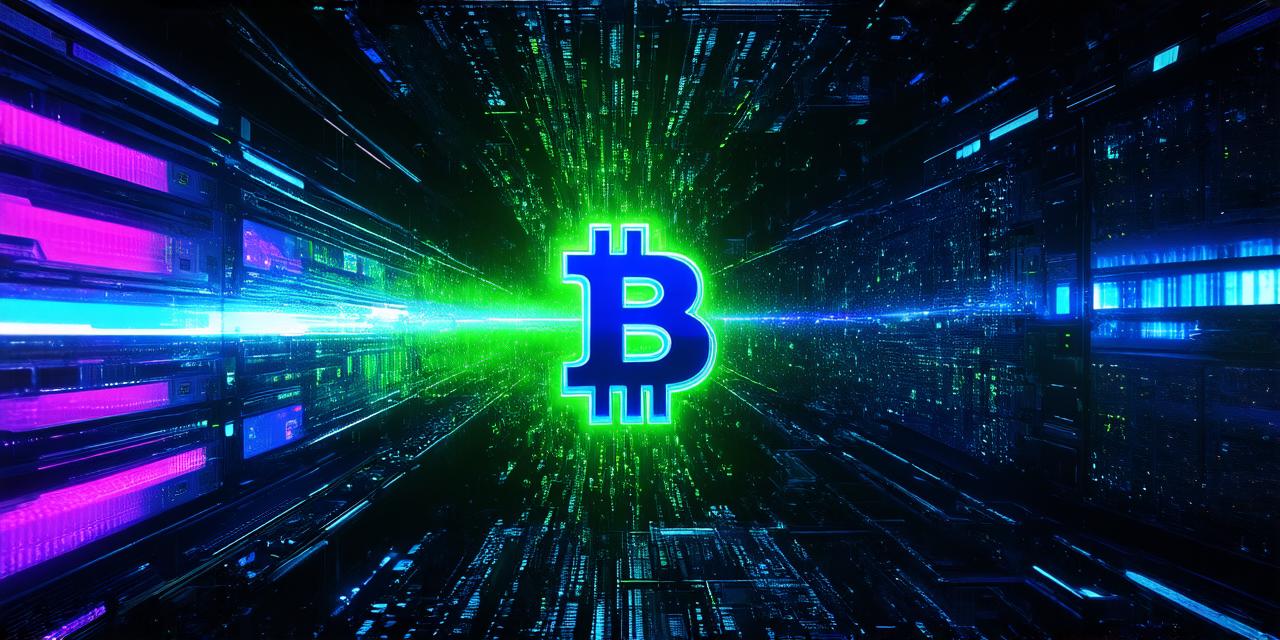What is an Initial Dex Offering (IDO)?
An Initial Dex Offering (IDO) is a way for cryptocurrency projects to launch their tokens on decentralized exchanges (DEXs) instead of traditional centralized exchanges. During an IDO, a new token is created and distributed to investors in exchange for a set amount of cryptocurrency or fiat currency.
One of the key advantages of IDOs is that they allow projects to avoid the high fees and lengthy process of listing on traditional centralized exchanges. Instead of paying millions of dollars in listing fees, projects can launch their tokens directly on a DEX for a small percentage of the tokens sold.
Another advantage of IDOs is that they allow for a more decentralized and open approach to fundraising. Since there are no intermediaries involved in an IDO, it is easier for projects to reach a wider audience and raise funds from a diverse group of investors. This can be particularly useful for smaller projects that may not have the resources to list on traditional centralized exchanges.
How does an IDO work?
An IDO typically involves the following steps:
- Token creation: The first step in an IDO is to create a new token. This can be done using a variety of different blockchain platforms, such as Ethereum or Binance Smart Chain.
- Token distribution: Once the token has been created, it needs to be distributed to investors. This can be done through a variety of methods, including airdrops, staking rewards, or crowdfunding campaigns.
- Token listing: The final step in an IDO is to list the token on a decentralized exchange (DEX). This allows investors to buy and sell the token using cryptocurrency or fiat currency.
One of the key features of an IDO is that it is typically open to anyone who wants to participate, regardless of their level of expertise or investment experience. This can make IDOs a particularly attractive option for new investors who may not have access to traditional venture capital funding sources.
Real-Life Examples of Successful IDOs
There have been many successful IDOs over the past few years, with some projects raising millions of dollars in funding. Here are a few examples:
- Uniswap (UNI): Uniswap is a decentralized exchange platform that was launched in 2018 using an IDO. The project raised $11 million in funding and has since become one of the most popular DEXs on the Ethereum network.
- Compound Finance (COMP): Compound Finance is a lending platform that allows users to borrow and lend cryptocurrencies using a variety of different assets as collateral. The project raised $12 million in funding through an IDO in 2018 and has since become one of the most widely used decentralized finance (DeFi) platforms on the Ethereum network.
- Yearn Finance (YFI): Yearn Finance is a DeFi platform that provides a variety of different financial services, including lending, borrowing, and yield farming. The project raised $11 million in funding through an IDO in 2020 and has since become one of the most popular DeFi platforms on the Ethereum network.
These are just a few examples of successful IDOs, but there have been many others over the past few years. As more projects look to use IDOs as a way to raise funds, we can expect to see even more success stories in the future.
Potential Risks and Challenges Associated with IDOs
While IDOs can be an attractive option for projects looking to raise funds, there are also some potential risks and challenges associated with this method of fundraising. Here are a few examples:
- Lack of regulation: Since IDOs take place on decentralized exchanges, they are not subject to the same level of regulation as traditional centralized exchanges. This can make it easier for fraudulent projects to raise funds from unsuspecting investors.
- Market volatility: The cryptocurrency market is known for its volatility, and this can be particularly problematic for IDOs. If the price of the token being offered drops significantly, it can be difficult for projects to meet their fundraising goals.
- Lack of liquidity: Since IDOs typically involve new tokens that have not been listed on traditional centralized exchanges, there may be limited liquidity available for trading. This can make it difficult for investors to sell their tokens if they need to do so quickly.
- Security risks: As with any cryptocurrency investment, there are always some level of risk associated with IDOs. Projects that fail to properly secure their smart contracts or other systems can be vulnerable to hacks and other security breaches.
FAQs
Here are a few common questions about IDOs:
1. How do I participate in an IDO?
To participate in an IDO, you will typically need to have access to a cryptocurrency wallet and be able to send the required amount of cryptocurrency or fiat currency to the project’s address. You may also need to meet certain eligibility requirements, such as being a resident of a specific country.
2. What are the risks associated with IDOs?
To evaluate a potential IDO project, you should consider factors such as the team behind the project, the project’s use case and market potential, and the project’s overall roadmap and development plan. You should also look at the project’s community engagement and support, as well as any existing partnerships or collaborations.
3. Can I invest in IDOs if I am not a cryptocurrency expert?
While it can be helpful to have some knowledge of cryptocurrencies and blockchain technology, it is possible to invest in IDOs even if you are new to the space. However, it is important to do your own research and carefully consider the risks and potential rewards before investing in any IDO.
Conclusion
Initial Dex Offerings (IDOs) are a relatively new way for cryptocurrency projects to launch their tokens on blockchain networks. While there are some potential risks and challenges associated with this method of fundraising, there are also many successful examples of IDOs over the past few years. It is important to do your own research and carefully consider the risks and potential rewards before investing in any IDO.

